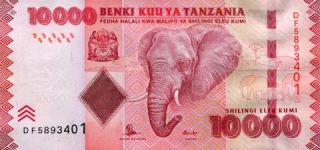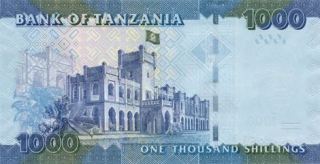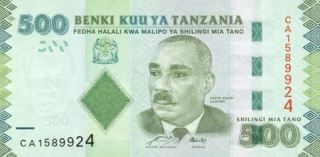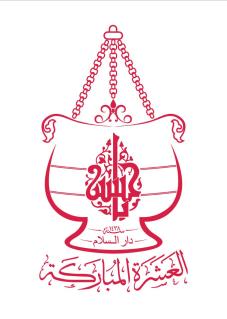Flight options into Tanzania are as follows
Kilimanjaro Airport – 12 hour drive to Dar es Salaam
Zanzibar Airport – 3 hours boat ferry to Dar es Salaam
Flight options into Tanzania via Kenya.
Flights are available frequently between Nairobi and Dar es Salaam.
Mumineen who are in transit in Nairobi, arrangements have been made for their transit stay by Nairobi Jamaat Mumineen. Kindly click on this link Here and register your information with them
It is 20 hour drive from Nairobi to Dar es salaam by bus.
It is a 10 hour drive from Mombasa to Dar es Salaam by bus.
Those flying on to Mombasa or Nairobi, please note. This is a different country. If you do not have a direct connecting flight from there to Dar es Salaam, you will have to pay for Kenyan visa AND Tanzanian visa upon arrival in Dar es Salaam.
TANZANIAN CURRENCY
LOCAL TRANSPORT
Making Your Way Around Dar Es Salaam – Local Transport
TAXI
You can identify a Taxi from its white number plate, some of which have green stripes on its body and a few who have a yellow “taxi signage” on its roof.
Taxi’s dont have meters.
Costs:
1. Short rides (0-2km)- Tsh5,000/= fares 2. From upanga (masjid area) to msasani peninsula- range from Tsh15,000/= to Tsh20,000/=
3. Airport to central city- Tsh30,000/=
Airport to Msasani Peninsula- range from Tsh35,000/= to Tsh40,000/=
Never get into a taxi that already has others in it.
UBER
Uber works similar to the taxi except an app is needed to be installed on your phone. Once you’re ready open the app and set your pick up location. The driver and cars information will be provided to you as well as letting you know how long he will take to come and pick you up.Uber’s tend to be slightly cheaper than the normal taxi’s. Fair estimates can be seen via the app.
BODABODA (Motorcycle Taxi’s)
These can be identified by their white number plates at the back of the motorbike. If you are to board a motorbike ensure you are given a helmet to wear as required per the law to ensure your safety.
Minimum cost for a short ride-Tsh2,000/=
1. Upanga to Town or Kariakoo- Tsh2,000- 3,000/=
2. Upanga to Msasani Peninsula-
Tsh5,000-7,000/=
3. Upanga to Airport-
Tsh10,000-15,000/=
BAJAJ (Tuktuk)
These are another common mode of transport. They are the three wheelers also with a white number plate.
Costs are as follows:
1. Upanga to Town or Kariakoo- Tsh4,000/=
2. Upanga to Msasani Peninsula-
Tsh10,000-15,000/=
3. Upanga to Airport-
Tsh20,000-25,000/=
SAFETY TIPS
1. Ensure you have agreed to the price before you board the vehicles.
2. Be sure not to leave any valuables once reaching your destination.
3. You can request the driver for his contact in order for you to use him again.
ENGLISH TO SWAHILI LANGUAGE AND VICE VERSA TRANSLATOR APP
http://sh.st/MUnlD
A transit facility has been organized for those mumineen traveling from abroad to Dar Es Salaam *via Nairobi*.
The transit facility includes transport to Dar-Es-Salaam and 1 night accommodation in Nairobi for those who require.
You are kindly requested to fill in the form in the link below very accurately so that the transit team is notified and can arrange for the same.
https://goo.gl/forms/AxXjpAwjfLvUJatR2
Shukran.
Have a Safe flight!
*ZANZIBAR TRANSIT INFORMATION*
A transit facility has been organized for those mumineen traveling from abroad to Dar Es Salaam *via ZANZIBAR
You are kindly requested to Contact
+255713209046
Transportation
Information for Mumineen Arriving at Dar es Salaam Julius Nyerere International Airport
Information will be uploaded soon.
Information for Mumineen Arriving Dar es Salaam by ROAD
All Mumineen arriving Dar-es-Salaam by Road MUST go directly to their accommodation.
Arrival scanning MUST be done within 24hrs at:
1.Diamond Jubilee Hall
2.Central Office (Zainab Manzil, Girl Guides)
3.Saifee Masjid, City Center
Information for Mumineen Arriving Daressalam by SEA (Ferry)
All Mumineen arriving Daressalam by Sea (Ferry) may use Public Transport/Taxi from the Port to Diamond Jubilee Hall.
After scanning at Diamond Jubilee Hall, transport will be provided to their respective accommodation.
Mumineen can also proceed directly to their respective accommodation by private vehicles.
Arrival scanning MUST be done within 24hrs at:
1.Diamond Jubilee Hall
2.Central Office (Zainab Manzil, Girl Guides)
3.Saifee Masjid, City Center
Zone A:
Waaz Transport Information
Mumineen can walk to Central Masjid from their accommodation. Flow management map will be uploaded soon.
Zone B:
Mumineen are advised to walk to Central Masjid. However, the following 3 pick-up points have been identified for elders and those unable to walk:
1.Saifee Masjid
2.Mnazi Moja/ Clock Tower
3.Libya Post Office
Drop off point near Central Masjid is National Housing Cooperation.
Mumineen should proceed to National Housing Cooperation for their return Shuttle.
Maps will be uploaded soon.
Zone C:
Busses will be provided from multiple pick up points.
There will be around 20 Routes with more than 50 Bus Stops.
Drop off points near Central Masjid are:
1.Diamond Jubilee Hall
2.Muhimbili Cricket Academy
Mumineen should proceed to either Diamond Jubilee Hall or Muhimbili Cricket Academy for their return Shuttle according to their Routes.
Routes and Maps will be uploaded soon.
Zone D:
Busses will be provided from the following 3 Pick-up points:
1.GAPCO Petrol Station
2.Sikh Temple
3.Amazon Pharmacy
Drop off point near Central Masjid is National Housing Cooperation.
Mumineen should proceed to National Housing Cooperation for their return Shuttle. Maps will be uploaded soon.
VISA INFORMATION
Mumineen travelling to Dar es Salaam from outside East African Region requires Visa to enter the United Republic of Tanzania. In arrival forms mumineen should mention the purpose of visit as ASHARA MUBARAKAH 1438
Mumineen can get VISA ON ARRIVAL at any designated entry points,
Please make sure that all passengers have sufficient cash, in dollars or euros, to buy the Tanzanian visa on arrival.
Requirement for it is as follows
Passport or Travel Document which is valid for not less than six months Return Air Ticket sufficient cash.
ORDINARY VISA
This is a Visa granted to foreigners other than prohibited immigrants seeking to enter the United Republic of Tanzania upon application for the purpose of visit, leisure, holiday, business, health treatment, studies, or any other activity legally recognized by the Laws of the United Republic of Tanzania for validity not exceeding three months for a single entry only.
For Mumineen coming from Sri-Lanka and Bangladesh, Further information will be provided soon
VISA FEES:
Standard fee rate for Ordinary Visa is US $ 50
All mumineen will be required to get VISA. All nationalities the VISA fee is $50
United States (US) Citizens, VISA fee is $100
HOST ADDRESS FOR TANZANIA VISA:
BOHRA Hakimi Masjid
Magore Road,
UPANGA AREA.
DAR ES SALAAM
Masjid & Mawaid Situated?
Hakimi Masjid – Magore Road, Annadil Burhani Grounds
Saifee Masjid – Zanaki / Kaluta Street
Daimond Jubilee (Mawaid) – Magore / Malik road
TAISEER U NIKAH ITNC INFORMATION
Huzurala TUS has graciously bestowed _*DAR ES SALAAM*_ with sharaf of Ashara Mubaraka 1438H.
*FOR SHAADI LAIQ FARZANDO*
– All farzando of East Africa should attend this Camp. They need to register on ITS52, choose a day and time slot to attend, and follow instructions there
– In preparation of attending the Camp, farzando should submit their registrations on www.attaiseerulburhani.com, if not done already. This will speed up their matchmaking process in the Camp
– Farzando should spread this message to all their eligible friends, cousins and peers to attend this Camp
.1. Registration for Medical Khidmat during Ashara Mubaraka 1438H. – Dar E Salaam has been started.
2. Doctors should carry all necessary equipment such as stethoscope, B.P. apparatus and Glucometer etc. with them.
3. All Doctors, Paramedics and Volunteers who wish to perform Khidmat in Medical Camp during Ashara Mubaraka 1438H. – Dar E Salaam should register on www.burhanimedicalidara.org compulsorily.
4. Once registered successfully; it will be mandatory for all Medical Khidmat Guzaars to mark their attendance at the registration desk at Main Medical Center upon arrival.
5. After marking the physical attendance, all Khidmat Guzaars will be allotted their respective time slots for khidmat.
6. All respected medical personnel are humbly requested to register for medical khidmat only if they wish to perform khidmat during Ashara Mubaraka 1438H. – Dar E Salaam.
7. Kindly note that registering for Medical Khidmat does not guarantee the Raza from ITS.
8. Any further Instructions will be updated accordingly.
1. Mumineen who wish to consult the specialist doctors should carry their previous medical records with them.
2. Mumineen who are suffering from chronic disease like Diabetes, Blood Pressure, Heart Disease and Asthma etc. should carry their necessary medicines with them.
3. Mumineen are requested to carry along their ITS ID card with them during their visit to Medical Camp.
DAR ES SALAAM HOSPITALS
REGENCY MEDICAL CENTRE 255 222150500 ALY KHAN ROAD
MUHIMBILI NATIONAL HOSPITAL 255 222151599 MALIK ROAD
HINDU MANDAL HOSPITAL 255 222119237 CHUSI ST
TUMAINI HOSPITAL 255 748659153 MAGORE ST
IBRAHIM HAJI HOSPITAL 255 222114995 MOSQUE ST
TMJ HOSPITAL 255 222700007 MIKOCHENI, OLD BAGAMOYO RD
SALI INTERNATIONAL HOSPITAL 255 222601296 YATCH CLUB RD
AL JUMAA CHARITABLE DISPENSARY 255 222182849 KARIAKOO, SIKUKUU ST
DR HAMIR HEALTH CENTER 255 222183265 SWAHILI ST, KARIAKOO
All details regarding dar ashara H1438 on:
1. Accommodation
2. Medical
3. Visas information
4. Currency
5. Sim cards / mini sim cards.
6. Help desk.
7. Vaccination
8. Arriving centres
9. Flight details.
10. Online general chatting
11. Any other information
To get all details please visit
DO’S
1. Greeting people
Greeting is one of the most important cultural aspects in Tanzania the foreigner should be aware of, since it might enhance or distort good relationship. If someone greets you, he means he respects you and he is ready to begin conversation at any time. If you need any help from someone, it is very important to greet him first or else you won’t get help. If you don’t greet your neighbors, it means you are not in good terms with them and if you are in a problem they won’t help you.
2. Respecting elders
Tanzanians are very much age conscious. They try to respect their elders as much as they can. This is due to the fact that,, elders are considered to be wise and having a lot of knowledge. Also Tanzanians believe that elders have the power to curse any young person who shows misbehavior to them. For that reason Tanzanians try hard not to annoy the elders in anyway. They tend to give them first priorities in various situations i.e. giving them their seats in public transport, greet them, remove hat when talking to them, etc.
3. Shopping
DO bargain at the market and at the shop before paying for an item, you will have fun doing it. But modern shops have fixed prices.
BE tolerant when people come late to the meetings, it is not only because they have a lot of work but also the different concept they have on time and indicators of time they use.
DON’TS
1. Smelling food
Tanzanians value and respect those who cook food. And to the Tanzanian culture, women /wives cook food. Smelling food indicates that the food is bad and so the cook is. Therefore it is considered rude to sniff food. Sniffing anything implies that it is rotten or it smells bad. Most of the foreigners smell various things at the market when buying them. This is not common in our culture. In case you want to know if a fruit is ripe or not, you have to press on the fruit and if it is easily pressed in, then it is ripe and vice versa.
2. Index finger
In Tanzania people value and respect each other. The index finger is used to call dogs as dogs are not valued and from the Islamic religion, dogs are not allowed to get into a mosque because they are dirty. For that matter, calling a person using the index finger, is like calling him a dog. Also calling a person using the index finger shows arrogance or superior attitude. This is mainly because the colonialists used to call the natives by using the index finger. Not to be considered having the colonial mentality which people hate, better not use the index finger when calling people in Tanzania. Instead use the palm of your hand or if the one you want to call is far and cannot see you, use your hand to call him/her.
3. Public affection
Love is very much valued, respected as it is within love the African families have been brought up. And as love is related to sex, it is considered a private and very secret issue and it is not something to be displayed in public. Kissing and hugging in public is not common. However holding hands between two people of the same sex is considered proper as it signifies close relationship.









